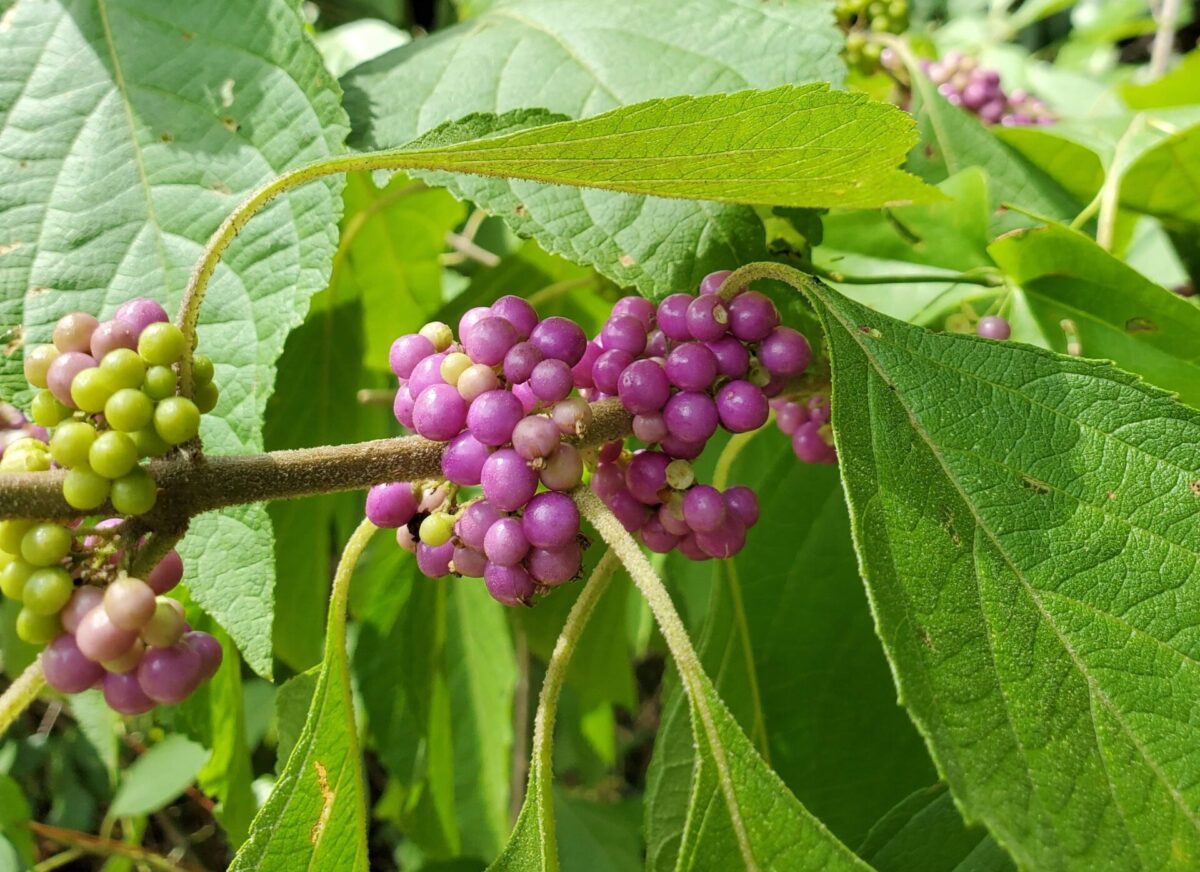Scientific name: Callicarpa americana L.
Other common names: American mulberry, French mulberry, Wild goose’s berries, Zi Zhu in Traditional Chinese Medicine.
The native range of C. americana extends from Maryland to Florida, west to Texas and Arkansas, and also Mexico, Bermuda, the Bahamas and Cuba.
Identification
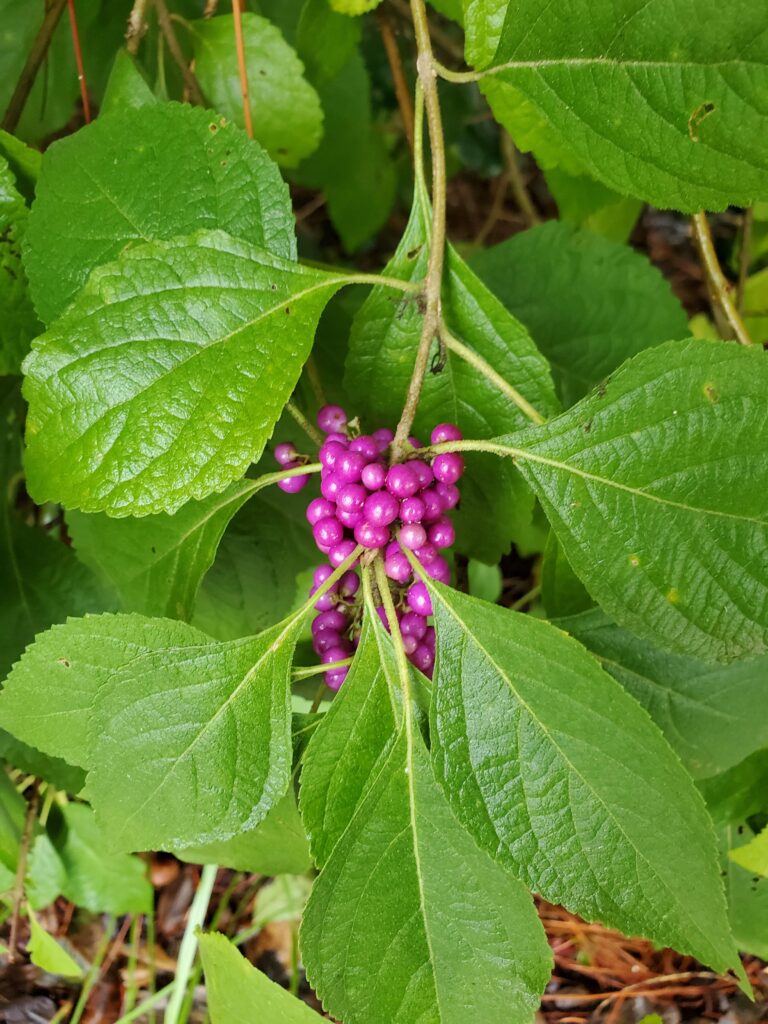
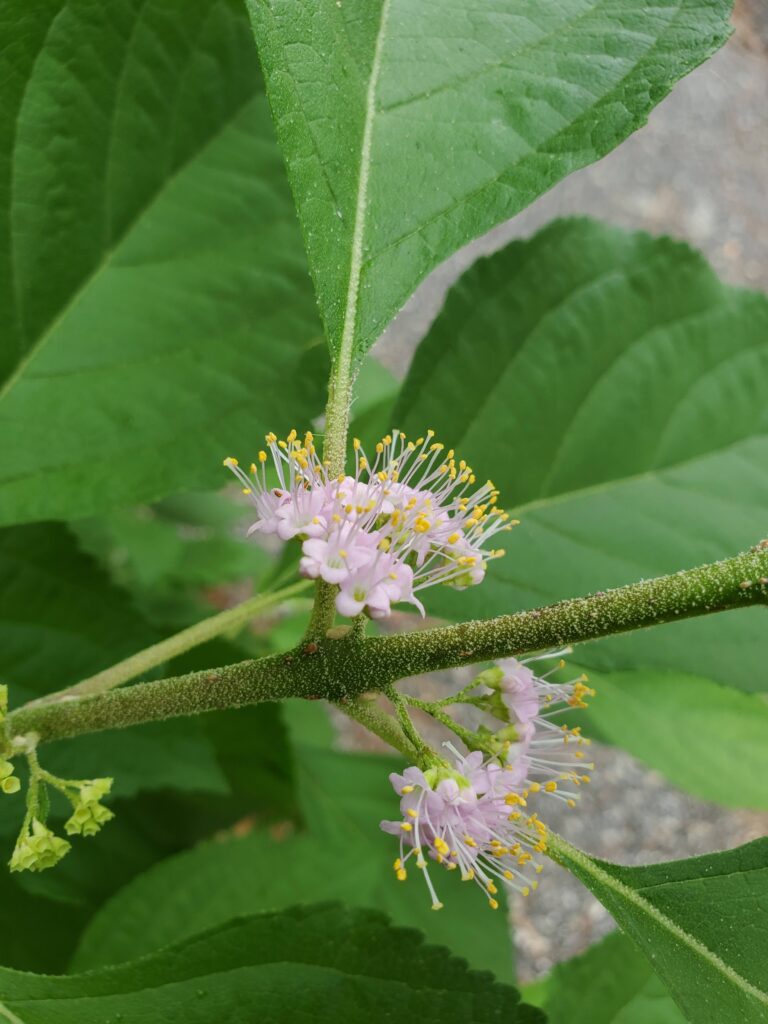
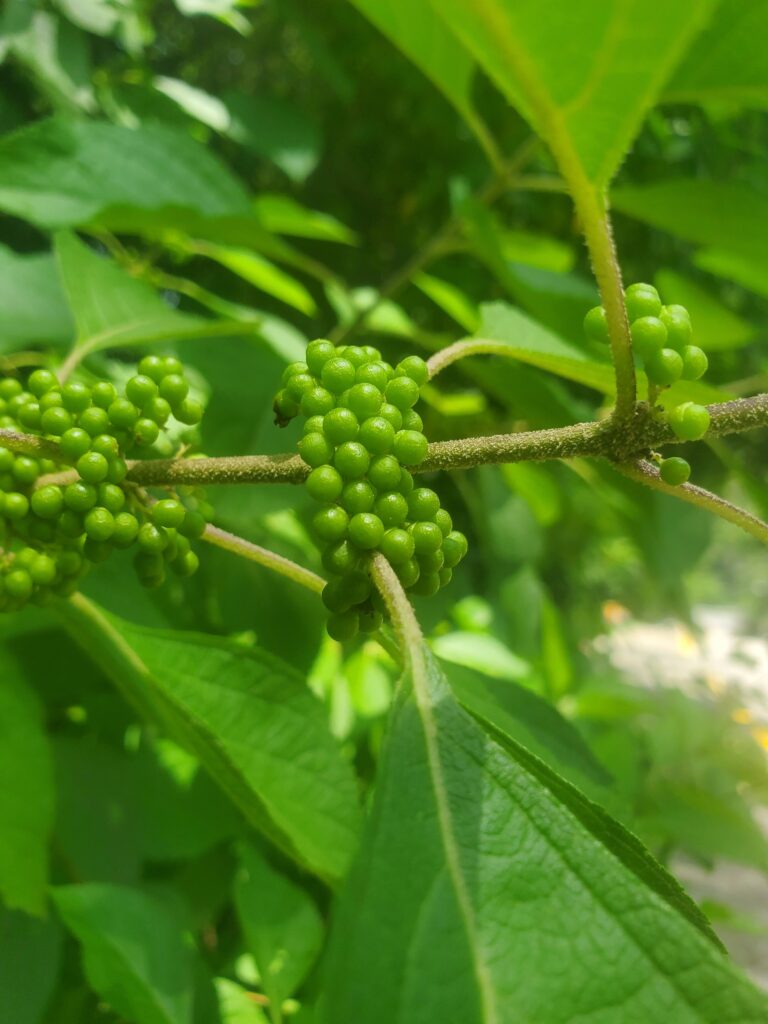

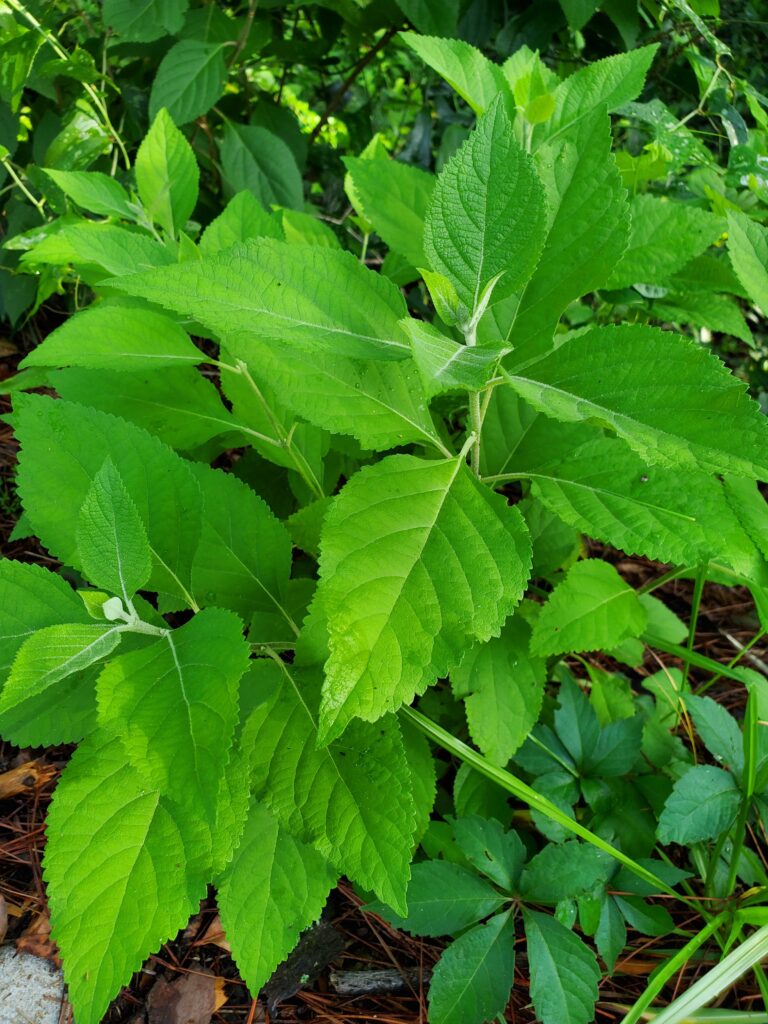
Beautyberry is a perennial plant that grows into a shrub of about 3-5 ft. in height. It can grow larger in areas with more favorable conditions and lack of plant competition. While it is most easily identified by its berries, in early to late Fall, it begins growing in the Spring. It has small light or pastel pink flowers. The berries grow in clusters and appear glossy with a bright iridescent-purple, almost fuschia or magenta-like, coloration. The fruit, which can sometimes also be white (Callicarpus americana var. lactea ), hug the branches at points where leaves meet on either side (axils). Leaves come in pairs and sometimes threes, are fuzzy to the touch, and are ovate shaped (like an egg that comes to a point) with serrated or tooth-like edges.1 The branches, bark, and trunk are not particularly showy.
Growing/Foraging
Beautyberry likes moisture and can be found natively in most of the Southern parts of the United States. Natural habitats for this plant include moist woods, moist thickets, wet slopes, low rich bottomlands, and at the edges of swamps, and coastal plains or woodlands. It tolerates both heat and cold and prefers to be partly shaded. It can grow in a variety of different soils including: rich, sandy, sandy-loam, medium-loam, clay-loam, clay, acid-based, and calcareous soils. The plants are prolific and grown naturally year to year without need for human intervention. However, they are also easily cultivated from seed, root cuttings, and softwood tip cuttings. The plant is endangered in Maryland.2 It is recommended that old wood be pruned heavily in late fall to early spring since flowers and fruit are produced on new growth.3
Medicinal and Food Properties
This plant has antibacterial, antiviral, astringent, antifungal, anti-inflammatory, antioxidant, and diuretic (root bark) properties. Astringent and cooling, this herb is useful to help treat bleeding in the lungs and stomach. The bark of various species of Beautyberry has been tested for antibacterial activity and findings indicate that it targets certain strains of bacteria such as Methicillin-resistent Staphylococcus aureus (MRSA), Bacillus cereus, Salmonella typhimurium, and many strains of cyanobacteria (blue-green algae). Modern practices also use Beautyberry to treat herpes simplex. A handful of studies have been done to confirm that Beautyberry extracts may actually prevent the replication of herpes simplex and polio viruses. 45.
The roots of the beautyberry have broad medicinal uses. A tea (infusion) made from the roots was used by native tribes in the Southeast, including the Choctaw, Creek, Koasati, Seminole and other tribes, as a treatment for all manner of stomach issues, from indigestion to gas to mild diarrhea to dysentery. A decoction made from the root bark can also serve as a diuretic. Roots, leaves, and branches alike were used in sweat baths to treat malarial fevers and rheumatism. Externally, the bark and stems were used to treat itchy skin.6 In Mexico, extracts from Beautyberry leaf are used to treat certain fungi harmful to plants. However it has also shown promise in helping treat certain yeast infections caused by Candida albicans.
The leaves of the Beautyberry also have a long folk history as bug repellent dating back to use by the indigenous tribes of the south. These claims have been confirmed in studies conducted at the University of Mississippi. Three repellent compound chemicals were extracted during a 12-month study: callicarpenal, intermedeol, and spathulenol. The research concluded that all three chemicals repulse mosquitoes known to transmit yellow fever and malaria. 7 It is considered more effective than deet without the problematic toxins. While you can extract these beneficial compounds in alcohol or oil, or create a salve, the simplest way to benefit from the plant’s repellent properties is to pick some leaves and rub them on your skin. As always, just do a skin patch test to ensure you are not allergic.
All manner of wildlife benefit from the berries of this plant. The berries are an important food source for squirrels, armadillos, raccoons, wood rats, gray foxes, opossums, white-tailed deer, and several types of birds including cardinals, woodpeckers, bobwhite quails, mockingbirds, robins, towhees, and brown thrashers. It has no major pests but caterpillars will sometimes snack on the leaves.
The fruit of the beautyberry is also edible to humans in its raw form, but most people find that it’s not the tastiest snack. The berries can be quite grainy or mealy and do not taste like much. They can leave your mouth feeling dry. That said, many people do eat them as a trailside snack. Where they truly shine though is when they are used to make jellies. People have also experimented with using them in sauces and wines. I am personally curious about using them in kombucha!
Safety
There are no major concerns with this plant. Some people have reported stomach issues with it and others may be sensitive to it topically. As with all plants and foods, there is always the risk of allergy.
Recipes
-
Beautyberry Insect Repellent Cream
An oil based insect repellent cream made with beautyberry roots and leaves, and neem oil.
-
Beautyberry Insect Repellent Spray
An alcohol-based insect repellant spray made with beautyberry leaves.
-
Beautyberry Jelly
Where the taste of beautyberries truly shine though is when they are used to make jellies.
-
Herbal Insect Repellent
An alcohol based insect repellant spray made with beautyberry, catnip, dog fennel, lemon balm, lemongrass, and neem oil.
Sources

